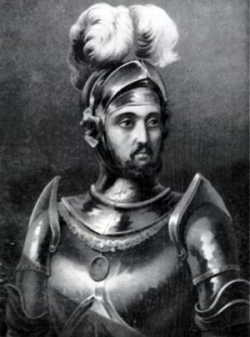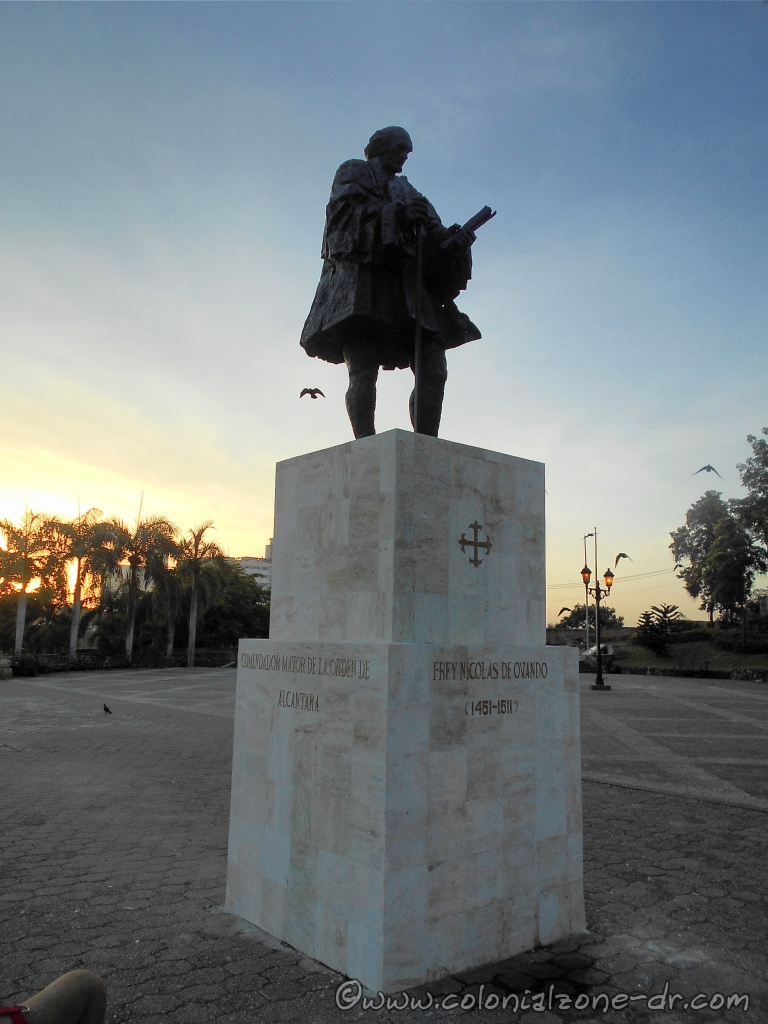Diego Colón (Columbus) 1480 – 1526

Diego Colón was the first born son of Christopher Columbus (Cristobal Colón). He was thought to have been born in Lisbon or Porto Santo, Portugal. Felipa Perestrello e Moniz, Diego’s mother, died when he was 4 years old.
From a very young age Diego belonged to the Spanish court as page of the prince Don Juan and later he was a page to the queen.
Diego married Maria de Toledo in 1508. María de Toledo y Rojas o María Álvarez de Toledo was the Granddaughter of the First Duke of Alba, Niece of the Second Duke of Alba, Cousin of King Ferdinand II of Aragón El Católico, and Great-Niece of the Catholic Kings. Because she was of noble lineage and her family had much influence in the Spanish court, this allowed Diego to obtain official recognition and thus granted him many privileges.
Governor of the Indies
In 1509 Diego Columbus was named Governor of the Indies when he arrived in Hispaniola to replace Nicholas de Ovando. He was accompanied by his wife, uncles, their brother Fernando and a large following.
During the government of Diego Columbus in Hispaniola Cuba, Puerto Rico and Jamaica were also conquered by the Spanish.

As soon as Diego settled in the colony and built his residence, The Columbus Palace/ Alcazar de Colon, he began to grant privileges to the people who arrived with him. All were given homes and property and many were granted seats in the government. This favoritism caused much discourse among many residents of the island. These residents complained before the court and demanded better treatment by the Governor. Fed up with the special treatment Miguel de Pasamonte, the Treasurer formed a group called The Servants of the King. They formed to oppose the governing group. To stop the fighting between the two groups the monarch created the Real Audience, a court that reduced the powers of the governor.
One of the many problems that confronted the Governor was how the Dominican priests defended the Indians. The defense of the Indians was initiated by Fray Antón de Montecinos. He gave a sermon that demanded better treatment for the natives. The governor and other authorities were all present when Montecinos made his famous speech in 1511. Montecinos was made Viceroy of the Indies in May 1511, remaining in charge until 1518.
Diego Returns to Spain
The many conflicts in Hispaniola forced the king to replace Diego Columbus and he returned to Spain. After being in Spain for a few years he again gained the favor of the king. Diego returned to his governorship in 1520.
Two years later the first rise of the black slaves took place. This new government was calmer than the previous one. Still King Carlos V finally suspended, for the second time, the son of Christopher Columbus from the government of Hispaniola.
Columbus returned to Spain in 1523. According to the capitulations of Santa Fe that were signed by Columbus and Catholic Kings, all the titles that were granted to Christopher would be inherited by Diego. Yet, when Diego died in 1526 he never got the promised recognition of the inherited rights that were promised to him by his father.







